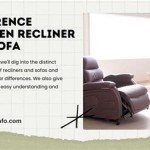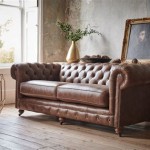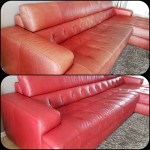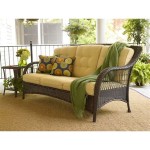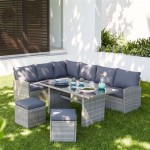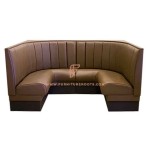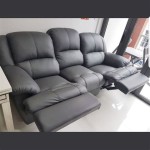Understanding the Average Size of a Sleeper Sofa
Sleeper sofas, also known as sofa beds, represent a versatile furniture option suitable for various living spaces. Their primary function is to provide dual utility: a comfortable seating arrangement during the day and a convenient sleeping solution at night. Understanding the average dimensions of a sleeper sofa is crucial for consumers to make informed purchasing decisions, ensuring the chosen piece fits comfortably within their available space while adequately fulfilling its intended purpose.
The dimensions of a sleeper sofa are influenced by several factors, including the sofa's style, design, and, most importantly, the size of the integrated mattress. These factors collectively determine the overall footprint of the furniture in both its sofa and bed configurations. Precise measurements are essential for planning room layout, ensuring unobstructed movement, and avoiding potential logistical challenges during delivery and installation. This article will delve into the typical dimensions associated with different sleeper sofa sizes, providing a comprehensive overview for prospective buyers.
Key Considerations Affecting Sleeper Sofa Size
Several factors contribute to the overall dimensions of a sleeper sofa. These elements are interconnected and must be evaluated collectively to determine the ideal size for a specific environment.
1. Mattress Size: The size of the embedded mattress is the most significant determinant of a sleeper sofa's overall dimensions. Common mattress sizes found in sleeper sofas include Twin, Full, Queen, and occasionally King. Each mattress size necessitates a corresponding sofa frame to accommodate its dimensions when folded away. The mattress dimensions directly impact the overall width, depth, and height of the sofa.
2. Sofa Style and Design: The specific style and design of the sofa frame also play a crucial role. Different styles, such as traditional, modern, or sectional, will inherently have varying dimensions. For instance, a rolled-arm sofa will typically be wider than a track-arm sofa, even if both accommodate the same size mattress. Similarly, the design considerations of the backrests, armrests, and base influence the overall footprint. Some designs prioritize space-saving, while others prioritize aesthetics, resulting in dimensional variations.
3. Mechanism Type: The mechanism used to convert the sofa into a bed also impacts the dimensions. There are primarily two types of sleeper sofa mechanisms: traditional pull-out mechanisms and click-clack mechanisms. Traditional pull-out mechanisms typically require more space in front of the sofa to fully extend the bed. Click-clack mechanisms, on the other hand, fold down into a flat position, often requiring less upfront space but potentially more space behind the sofa.
Average Dimensions of Common Sleeper Sofa Sizes
To provide a point of reference, the following outlines the average dimensions associated with the most common sleeper sofa sizes. These are approximate values, and actual dimensions may vary depending on the manufacturer and specific design features.
Twin Sleeper Sofa: Twin sleeper sofas are among the smallest available options, often suitable for smaller bedrooms or home offices. The mattress size is typically around 39 inches wide and 75 inches long. As a sofa, a twin sleeper sofa usually measures between 65 to 75 inches in width, 30 to 36 inches in depth, and 30 to 36 inches in height. When converted into a bed, the overall length will extend to approximately 75 inches.
Full Sleeper Sofa: A full sleeper sofa offers a slightly larger sleeping surface than a twin, making it suitable for individual sleepers or couples who don't mind close proximity. The mattress size is approximately 54 inches wide and 75 inches long. As a sofa, the full-size variant generally measures between 75 to 85 inches in width, 32 to 38 inches in depth, and 32 to 38 inches in height. When opened into a bed, the length extends to approximately 75 inches.
Queen Sleeper Sofa: Queen sleeper sofas are the most popular choice, offering ample sleeping space for couples. The mattress size is typically 60 inches wide and 80 inches long. As a sofa, queen-size models usually measure between 80 to 90 inches in width, 34 to 40 inches in depth, and 34 to 40 inches in height. When converted into a bed, the length extends to approximately 80 inches.
King Sleeper Sofa: King sleeper sofas provide the largest sleeping surface, offering maximum comfort for couples or individuals who prefer extra space. The mattress size is approximately 76 inches wide and 80 inches long. These are less common due to their significant size. As a sofa, king-size models usually measure between 90 to 100 inches in width, 36 to 42 inches in depth, and 36 to 42 inches in height. When converted into a bed, the length extends to approximately 80 inches.
It's essential to note that these dimensions are averages. Some sleeper sofas may deviate slightly from these measurements, particularly in depth and height. Consumers should always refer to the manufacturer's specifications for the most accurate dimensions before making a purchase.
Practical Considerations for Space Planning
Beyond understanding the average dimensions of different sleeper sofa sizes, it is imperative to consider practical aspects of space planning before committing to a purchase. Thoughtful planning can prevent logistical issues and ensure the chosen sleeper sofa fits comfortably within the intended space.
1. Measuring the Available Space: Accurately measure the area where the sleeper sofa will be placed, both in its sofa configuration and when fully extended as a bed. Account for any potential obstructions, such as doorways, windows, or existing furniture. Mark the dimensions on the floor using tape to visualize the space the sofa will occupy.
2. Considering Traffic Flow: Evaluate the traffic flow within the room. Ensure that the sleeper sofa, even when extended, does not obstruct pathways or impede movement. Allow sufficient space for people to walk around the sofa comfortably. This is particularly important in smaller living spaces.
3. Account for Doorway and Hallway Dimensions: Before purchasing a sleeper sofa, measure the width and height of all doorways and hallways through which the sofa will need to pass during delivery. Sleeper sofas can be bulky and difficult to maneuver, so ensuring adequate clearance is crucial to avoid damage to the furniture or the property. Some retailers may offer disassembly and reassembly services, which can be beneficial in tight spaces.
4. Consider Mattress Thickness and Comfort: While focusing on the external dimensions, it is equally important to consider the mattress thickness and overall comfort. Thinner mattresses may be less comfortable for long-term use. Inquire about the mattress type (foam, innerspring, or hybrid) and its support level. Some sleeper sofas offer upgraded mattress options for enhanced comfort. Reading customer reviews can provide valuable insights into the quality and comfort of the mattress.
5. Assess the Frame Construction Quality: The quality of the sofa frame is a critical factor in determining its durability and longevity. Look for frames constructed from solid hardwood or reinforced metal. Avoid frames made from particleboard or flimsy materials, as these are more prone to breakage. A well-constructed frame will provide better support and stability, ensuring that the sleeper sofa can withstand regular use. Examine the joints and connections to ensure they are secure and well-reinforced.
6. Check the Sleeper Mechanism: The sleeper mechanism should operate smoothly and easily. Test the mechanism several times to ensure it is not prone to sticking or jamming. Look for mechanisms with safety features, such as locking mechanisms to prevent accidental closure when the bed is in use. A reliable mechanism is essential for ease of use and safety.
7. Evaluate the Upholstery Fabric: The upholstery fabric should be durable, stain-resistant, and easy to clean. Consider the fabric's texture and appearance, ensuring it complements the room's décor. Common upholstery options include microfiber, polyester, cotton blends, and leather. Each material has its own advantages and disadvantages in terms of durability, maintenance, and cost. Choose a fabric that is appropriate for the intended use and lifestyle.
By carefully considering these practical aspects, consumers can make a well-informed decision when purchasing a sleeper sofa, ensuring that it not only fits comfortably within the space but also meets their functional and aesthetic requirements.

J E Home 78 In White Technology Fabric Full Size Convertible 2 Seat Sleeper Sofa Bed Adjustable Loveseat Couch With Usb Ports Je Sfb200or The Depot

Kinwell 57 In Beige Convertible Full Size Pull Out Faux Leather Sleeper Sofa Bed Reclining With Adjustable Backrest Bsc087 By The Home Depot

Milo Sleeper Sofa Rove Concepts

Sofa Bed Mattress Replacements The Ultimate Guide 2024

Ashley Mahoney Chocolate Full Sleeper Sofa Homemakers

Morelos Queen Sofa Sleeper

57 Modern Velvet Sofa With Pull Out Sleeper Bed Convertible Couch Adjustable Backrest 2 Pillows Big Side Pocket Multifunctional Loveseat For Apartment Dorms Blue

Ashley Miravel Slate Queen Sleeper Sofa Homemakers

Cassidy Sofa Sleeper With Memory Foam Mattress Room Joy Target

The 10 Best Sleeper Sofas Sofa Beds Of 2024 Home Cozy

